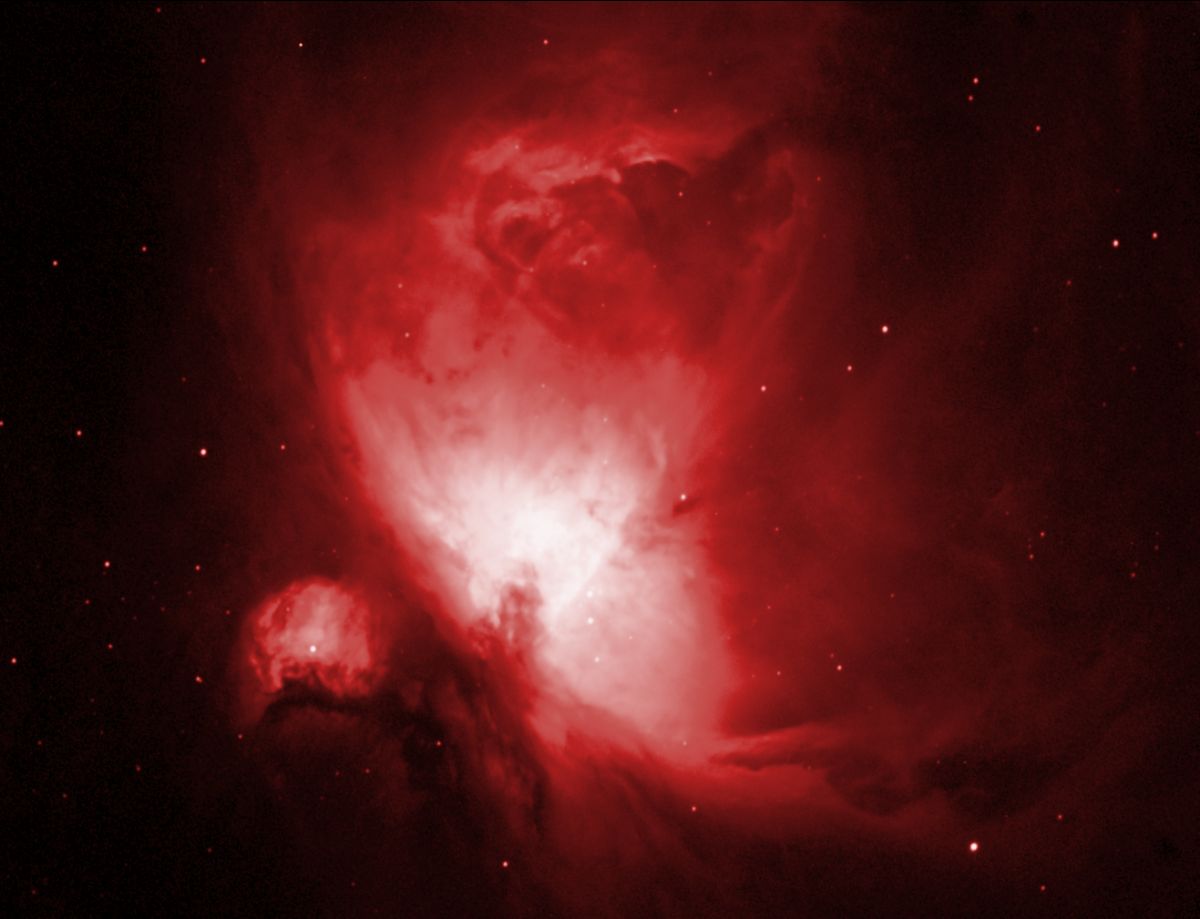
The great nebula in Orion is considered to be the finest example of a diffuse nebula in the sky. M42 was first photographed in 1880. Until recently, the nebula's distance from us was still uncertain, in spite of the fact that the nebula had been studied for many years. However, an international group of radio astronomers applied sophisticated techniques to finally determine the distance with an uncertainty of less than 2%. The nebula is located 1270 light-years from our planet Earth. The nebula shines in visible light due to the fluorescense of hydrogen gas excited by strong ultraviolet radiation from the nearby multiple star system known as Theta Orionis. The bright central region of the nebula known as the Huyghenian Region invariably appears completely burned out in photographs, but a CCD image can be digitally processed to reveal great detail. The actual density of the gas in the nebula is less dense than a millionth of the density of gas in a laboratory vacuum here on Earth. The total mass is sufficient to form about 10,000 stars like our Sun, and the nebula is a region where new stars are being born.
This is a false color composite CCD image taken with a Takahashi FCT-150 telescope on a Takahashi Temma GoTo mount using an SBIG ST-8E from my backyard in Scottsdale, Arizona. Image acquisition and processing was done with MaxIm DL/CCD.
M42 (NGC 1976)
Constellation: Orion
RA: 05h 35m 30.2s Dec: -05d 27' 01"
January 21, 2002
Image by Sid Leach
Scottsdale, Arizona
Recent Images.
Complete list of images.
Description of equipment used to acquire images.
Home
Feedback and comments should go to Sid